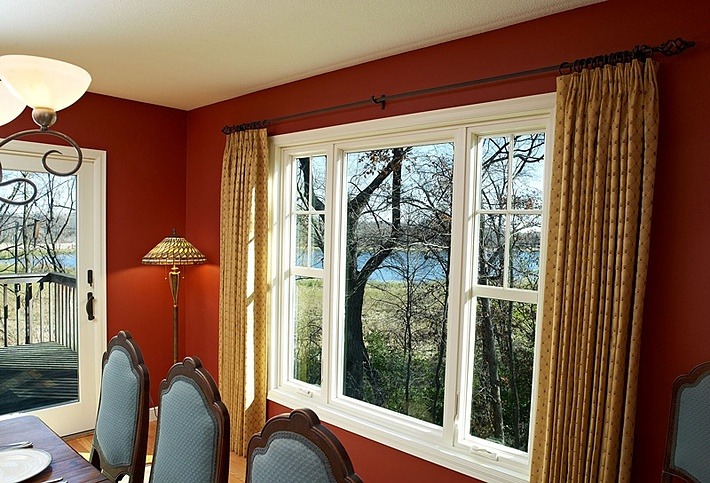


From time to time, you may notice a little water accumulating on or in the windows in your Cincinnati home. The condensation might be on the outside of the windows, the inside of the windows, or even between the dual glass panes. It’s normal to be concerned when you see such water, but rest assured: it’s not always as big of an issue as you might imagine. Below, you will find five common questions homeowners have about window condensation, along with our answers.
1. Where does the water come from?
Condensation appears when water vapor from the air turns into a liquid on a surface. Usually, this occurs when the air is humid and the window surface is colder than the surrounding air. Cold air cannot hold as much moisture as warm air, so when the warm air hits the cold window surface, some of the water condenses out of the air and accumulates on the window.
2. What does condensation on the inside of your windows mean?
Condensation on the inside of your windows is not a major concern. It doesn’t usually mean there is anything wrong with your windows, but instead may indicate a problem with your home’s humidity level. If you install a dehumidifier, you will soon notice less condensation on the insides of your windows. Make sure you’re using your kitchen and bathroom exhaust fans, too!
While interior condensation does not mean there is anything wrong with your windows, it is an issue you should address. Constant exposure to moisture can cause window deterioration and mold, so if you ignore the problem, you may end up with leaky, rotten window sashes soon.
3. What does condensation on the outside of your windows mean?
Condensation on the outside of your windows in the summer months may mean your windows are not as efficient as they could be. The cool air in your home may be escaping through the window. Humidity in the air will condense on the overly cool window. If you have your windows replaced with new, energy-efficient windows, you will notice less exterior condensation.
4. What does condensation between the window panes mean?
If you try to wipe away the condensation and it does not disappear, the moisture is probably between the glass panes. This means that your glass is no longer sealed tightly into the window sash. The sashes may be rotting or deteriorating, allowing air to leak through. Again, replacing the windows is a good solution. Make sure you replace windows with between-pane condensation promptly as they are likely to become moldy if left for too long. Choose composite windows — like Fibrex® windows from Renewal by Andersen — over vinyl windows. Vinyl windows tend to develop leaks quite quickly, leading to more condensation between the glass.
5. Should You Clean Up Window Condensation?
If you notice condensation inside your windows, make sure you clean it up. You can simply soak it up with an absorbent cloth or towel. If you notice any mold, clean it up with a mixture of bleach and water. There’s typically no need to clean up exterior condensation. It usually appears in the morning and will go away on its own as the day warms up.
Window condensation is a common problem in Cincinnati homes. If you are having problems with condensation, contact Renewal by Andersen to schedule a free, in-home consultation and learn more about our replacement windows.